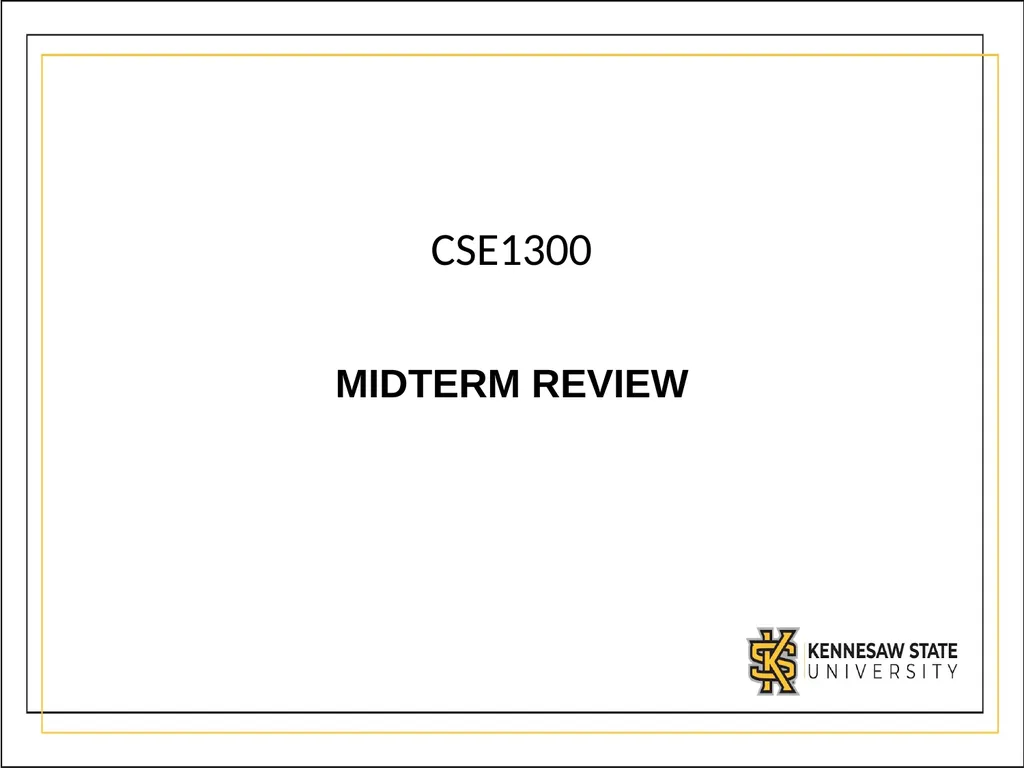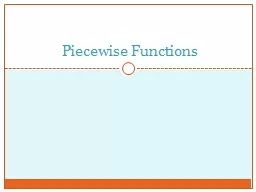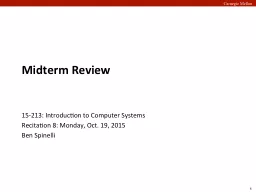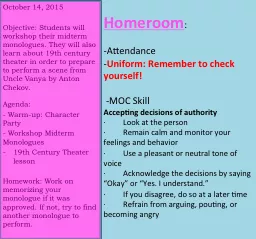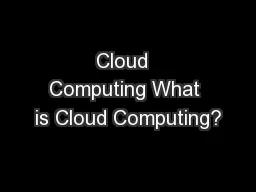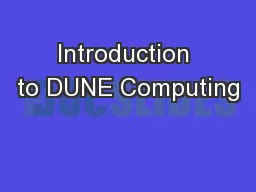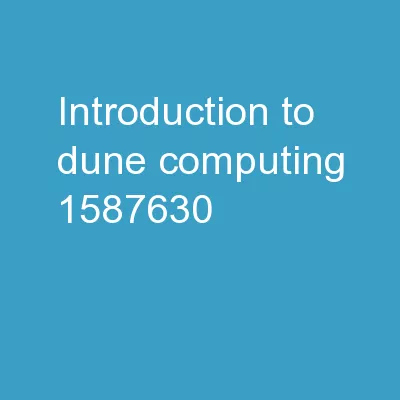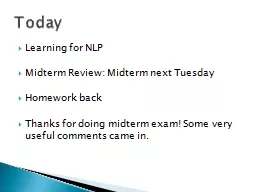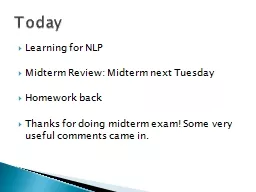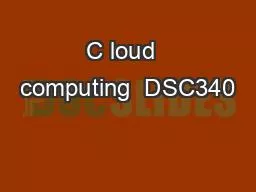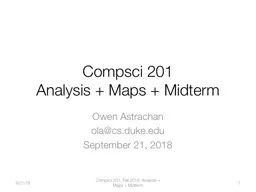CSE1300 MIDTERM REVIEW Intro to Computing (History
Author : min-jolicoeur | Published Date : 2025-06-23
Description: CSE1300 MIDTERM REVIEW Intro to Computing History Trends Computers Everywhere Phones watches smart TVs cars IoT Historical Progress Mainframes affordable personal computers smartphones wearables Moores Law Doubles in
Presentation Embed Code
Download Presentation
Download
Presentation The PPT/PDF document
"CSE1300 MIDTERM REVIEW Intro to Computing (History" is the property of its rightful owner.
Permission is granted to download and print the materials on this website for personal, non-commercial use only,
and to display it on your personal computer provided you do not modify the materials and that you retain all
copyright notices contained in the materials. By downloading content from our website, you accept the terms of
this agreement.
Transcript:CSE1300 MIDTERM REVIEW Intro to Computing (History:
CSE1300 MIDTERM REVIEW Intro to Computing (History & Trends) Computers Everywhere: Phones, watches, smart TVs, cars, IoT. Historical Progress: Mainframes → affordable personal computers → smartphones & wearables. Moore’s Law: Doubles in processing power every two years (slowing down recently). Effect on Society: Automation, job shifts, global connectivity, social challenges. Example: A 1980s personal computer cost $600 with 64KB of RAM. Today, a phone might cost $600 but has 6GB RAM and multiple CPU cores—enormous growth thanks to Moore’s Law. Computer Components Case: Protects internal components, aids cooling. CPU: Central chip for processing (Intel, AMD, ARM). Runs at GHz speeds; multiple cores. RAM: Temporary working memory (4GB, 8GB, 16GB+). Motherboard: Connects all components (CPU, RAM, GPU, storage, etc.). GPU: Specialized for graphics/math-heavy tasks (3D rendering, cryptography). Storage: HDD vs. SSD vs. NVMe. Where data is kept when powered off. Example: A gaming PC has a high-end GPU to handle intense 3D computations and several fans to keep the CPU and GPU from overheating during gaming marathons. Computational Thinking Computational Thinking is a problem-solving approach involving: Decomposition – Breaking down a complex task into smaller, more manageable parts Algorithmic Thinking – Designing step-by-step instructions or procedures Abstraction – Identifying relevant information while ignoring the details Pattern Recognition – Finding similarities and repeated elements across problems Crucial for analyzing ambiguous or open-ended problems in many disciplines. Example: A student organizing a charity event applies decomposition (venue, budget, volunteers, publicity), then uses algorithmic thinking to schedule tasks in order. Decomposition Decomposition: Splitting a large task (or problem) into subtasks. Makes complex problems easier to solve, test, and maintain. Facilitates team collaboration: each person can handle a different subtask. In Computer Science, we decompose tasks (e.g., reading data, processing it, outputting results) before coding. Example: When writing a research paper, you decompose it into sections: introduction, methods, results, discussion, conclusion. Each section can be tackled independently, then combined. Algorithmic Thinking Algorithm: Precisely defined instructions for solving a problem (e.g., sorting a list, calculating area). Algorithmic Thinking: Ability to outline and analyze these steps clearly before coding or implementing. Flowcharts can visually represent algorithms (decisions, processes, inputs/outputs). Efficiency matters: We aim for solutions that are less time- or resource-intensive. Example: A bank’s ATM uses an algorithm to read your card, verify your PIN, check your balance, and dispense cash. That sequence of steps ensures a correct, secure transaction. Abstraction Abstraction: Focusing on the essential details
